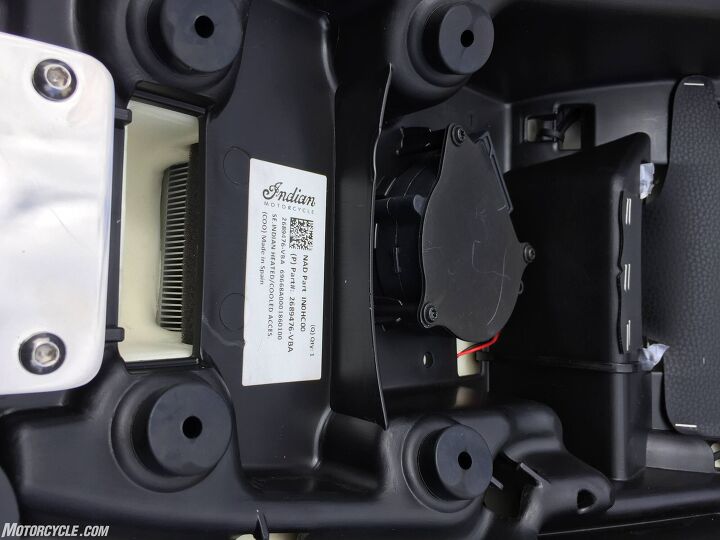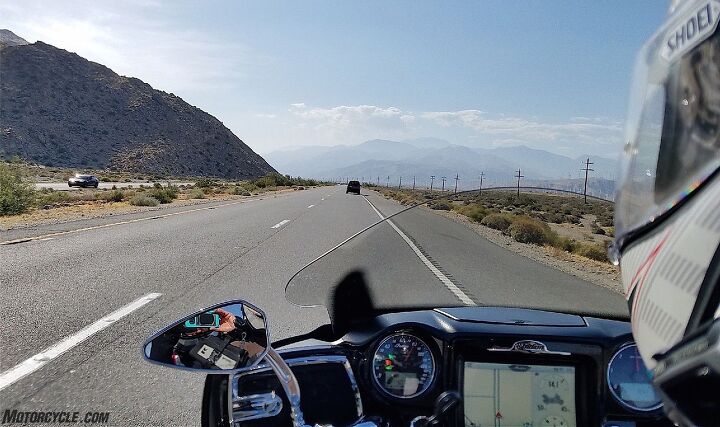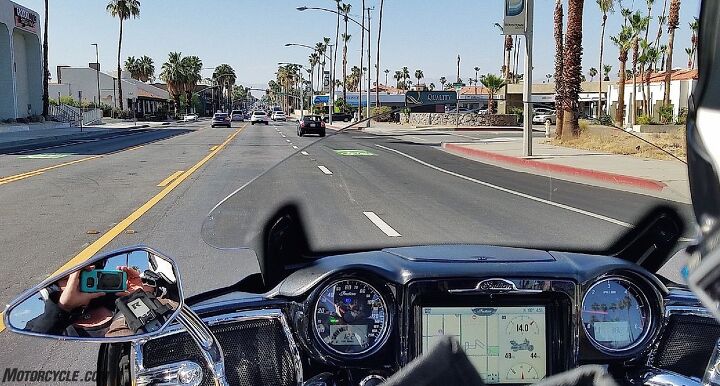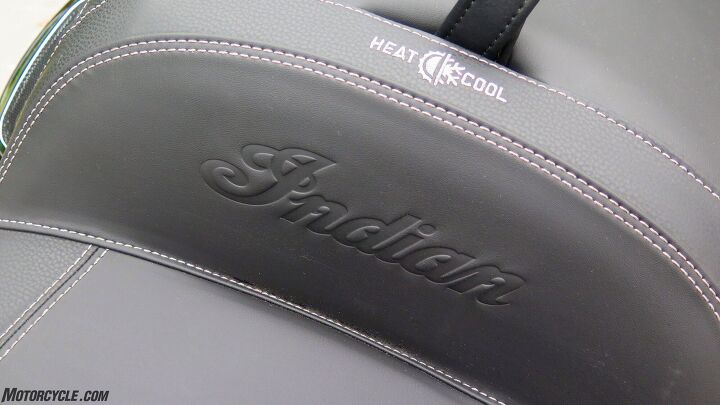Every time it comes time to write one of those “Great Motorcycle Developments of the Future” deals, some form of cooling tech always makes it to the top of the list. Usually it’s an air-conditioned helmet. Indian decided to attack the heat problem from the other direction with its ClimaCommand Classic Seat, retro-fittable onto all Thunderstroke models back to 2016.
Heretofore, air-conditioning tech involved Freon, pumps and compressors and things – stuff that’s too bulky and complicated to package in a motorcycle. Now thanks to the new wonder material graphene, none of that’s necessary. For one of many things, graphene is an excellent heat conductor. Indian says it’s “a highly conductive and flexible material that optimizes the distribution of heating or cooling while maintaining superior comfort.” Here are a few more potential uses for the stuff according to Wikipedia.
For another thing, graphene can be formed into a very strong and flexible thin sheet, and that’s what Indian have placed inside their new seat. According to Indian’s Product Development Supervisor for On-Road Accessories, Sam Dando, Indian is working with an outside company to produce the seat. The key to making it work is the solid-state thermodynamic controller in the base of the seat, which controls two different elements, one each in the rider’s seat and one in the passenger section – each with its own little ducted cooling fan.
The graphene layer doesn’t just cool; it can heat as well, and therefore replaces the wiring of the typical heated seat. All you need to do, then, is decide if you’re hot or cold, reach down with your left hand to the side of the seat, and flip the toggle switch up for heat (three settings) or down to cool (three more).
Indian says it works like this: To accomplish conduction heating and cooling, a thermoelectric module located within the seat directly regulates the temperature. Electricity is applied to a thermoelectric module, causing one side of the module to absorb heat and the opposing side to dissipate heat. By reversing electrical flow, the hot and cold temperatures alternate sides. A graphene material, which is a nanomaterial created from 100% carbon atoms, is then used to ensure the heating and cooling is dispersed throughout the entire seat.
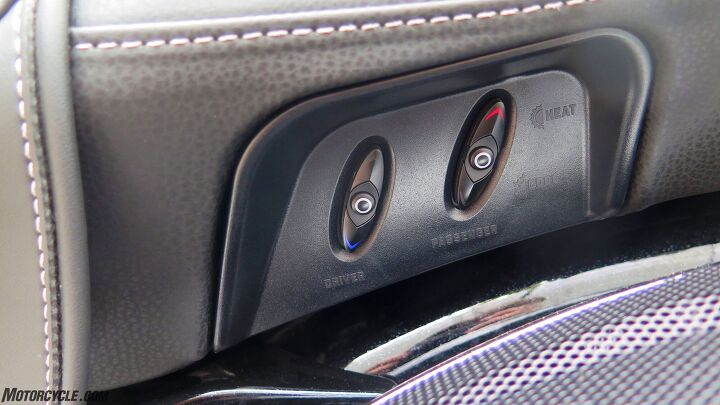
The little blue light on the driver’s side means you’re cooling, the passenger’s red one means it’s heating. It was too hot for us to test the heating function, but I wouldn’t be surprised to see many happily dysfunctional riding couples in this configuration. The toggles are easy to feel with gloves on.
And so we ride. On the way home from where I picked up my Roadmaster, a mile from the Pacific Ocean, to my digs eight miles inland, the temperature was between 76 and 80 degrees Fahrenheit, and with max cooling on the ride home it was like sitting in a kiddie pool nicely chilled. But when the temp’s perfect like that, you don’t really need a cool seat anyway do you?
I promised Chrissy Rogers I’d buy her lunch if she’d help me test the new seat on a ride to Palm Springs – where the high that day was supposed to be 106 (a fact I omitted). Rogers runs notoriously hot, especially since, ahhh, never mind. For a long time escaping LA on routes 57 and 10, the Indian’s temp gauge read 86. It being a Friday afternoon, and traffic being back to about 90% of normal flow as the economy “reopens,” we did our fair share of low-speed rolling and lane-sharing for most of an hour. I felt some cooling, but not as much as I had when the ambient temp had been 10 degrees lower. Rogers reported her behind was nicely chilled, but was more excited about the Roadmaster’s vibra-massage backrest, a non-intentional feature: She liked the massage but complained that it blurred her vision a bit. When we stopped, her rear was so chilled she had to check to see if she’d wet her pants. No.
Past Cabazon and the dinosaurs on I-10, the temp gauge read 96 and things were beginning to hot up eastward. I reached down to make sure my cooling was on max and wished for more. The fact that your behind is being chilled, if only slightly now, makes the heat coming off the bike’s front cylinder on your right calf that much more apparent, but this was my bad for forgetting to open the big vents on the Roadmaster’s lowers. We know from experience those vents make a big difference.
Rogers was still enjoying a cool butt, but as soon as we hit San Gorgonio Pass and the beginning of the Mojave, the temperature shot up and the cool seat wasn’t enough to offset the hotness of the rest of her internal Chernobyl. She reported instant eyeball and boob sweat. TMI, as usual. Up front, I couldn’t really feel any coolness from the seat, but I felt not that hot anyway.
Right, now we’re in downtown Palm Springs with the temp gauge registering 103. It’s hot, but something about Palm Springs always makes it feel not quite as hot as it is. Cool people? Actually it’s the total lack of humidity, and I have no idea how the seat would perform in a humid climate.
We stopped for a cold drink in the shade on the sidewalk, under the misters, and weren’t uncomfortable at all – frogs heated slowly in the pot. No complaints from Rog, but all she took on was ice water. Unusual.
After a bit of stop-and-go traffic on Palm Canyon Drive in the 103-degree heat for science’ sake, we turned 180 degrees and set a course back for cooler climes. I couldn’t feel any cooling effect from the seat at all – but the rest of me didn’t feel as hot as I would have expected to be, given the conditions. Maybe the seat doesn’t feel cool to your jeans when it’s that hot, but maybe the seat is cooler than it would’ve been without the graphene, given that there’s a 116-cubic inch air-cooled V-Twin thumping inches away (even if it does have rear-cylinder deactivation now).
Rogers, in the radio officer seat, could feel some cooling, but only in a narrow, crotchal band that did not extend laterally out to the sides of her rear end at all – a greater distance than it was not long ago. There just wasn’t enough cooling surface area. Better than nothing, but not quite the miracle we were hoping for.
Indian claims its new seat is a “game changer.” For us on this ride, I’m sorry to say it felt more like early innings and no score, but with a lot of potential for excitement later in the game thanks to the unpredictable rookie players on the field. You can feel the graphene getting cool with your hand, but in the rider’s section the coolest area is toward the tank where you (I?) don’t sit. Further back against the bolster, where you do sit, didn’t feel as cool.
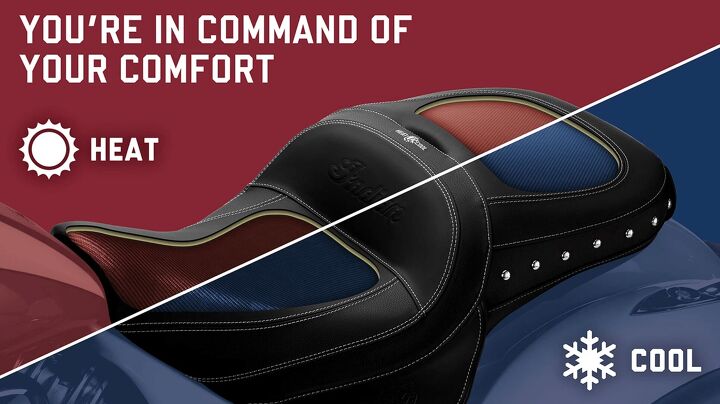
Ahhh, if this graphic is accurate, it would explain why there’s no cooling in the sides of the seat or the bolster.
Out back, further removed from the ThunderStroke 116, Rogers reported better cooling but only up to her sweat threshold of about 95 degrees: After that, the passenger seat just didn’t have enough capacity to overcome her internal furnace. (Off the motorcycle, her threshold is closer to 80 F, so the seat does have some benefit.)
Three settings is too many, too: I was reaching down repeatedly trying to crank my cooling up another notch even though I knew we were maxed out. Maybe Palm Springs broke it, I thought? But when I rode the bike to return it the next day, the seat was cooling off fine again, in 70- and 80-degree temps. What the heck. I think we’re looking at a genius development in need of some fine-tuning. I hope we are, because if they can make this tech work a little better, it really will change the game and is destined to be a perineal favorite. What’s to prevent graphene vests or yarmulkes in the future?
The ClimaCommand Classic seat sells for $1,200, and will fit all the ThunderStroke bikes back to 2016. It is not Ride Command-integrated, but Indian says Ride Command-integrated versions will be available for the 2020 Chieftain and Roadmaster later this year – which means you’ll be able to control it with the handlebar buttons and touchscreen. Chill out in the meantime, and don’t forget your hydration pack and cooling towels.

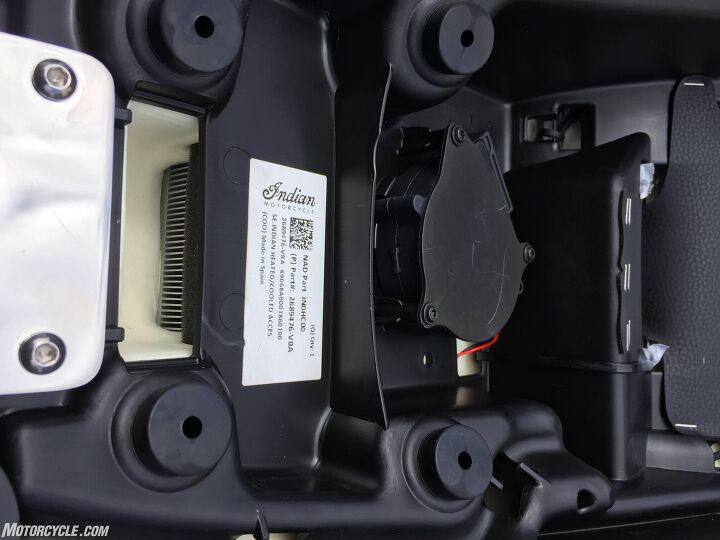

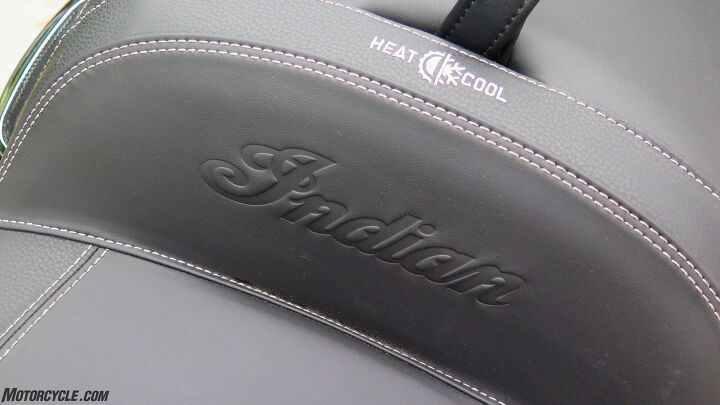


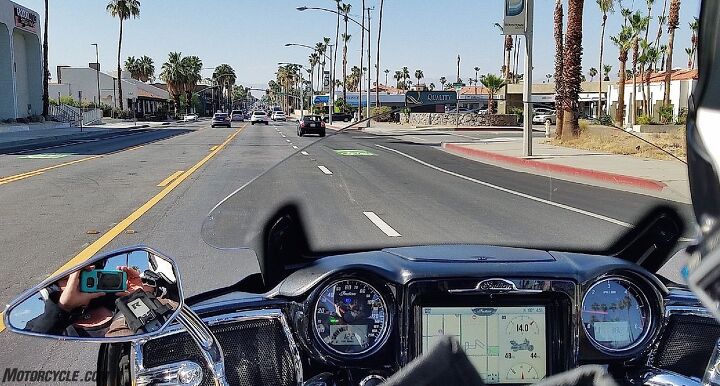

The post Indian ClimaCommand Classic Seat Review appeared first on Motorcycle.com.
【Top 10 Malaysia & Singapore Most Beautiful Girls】Have you follow?
